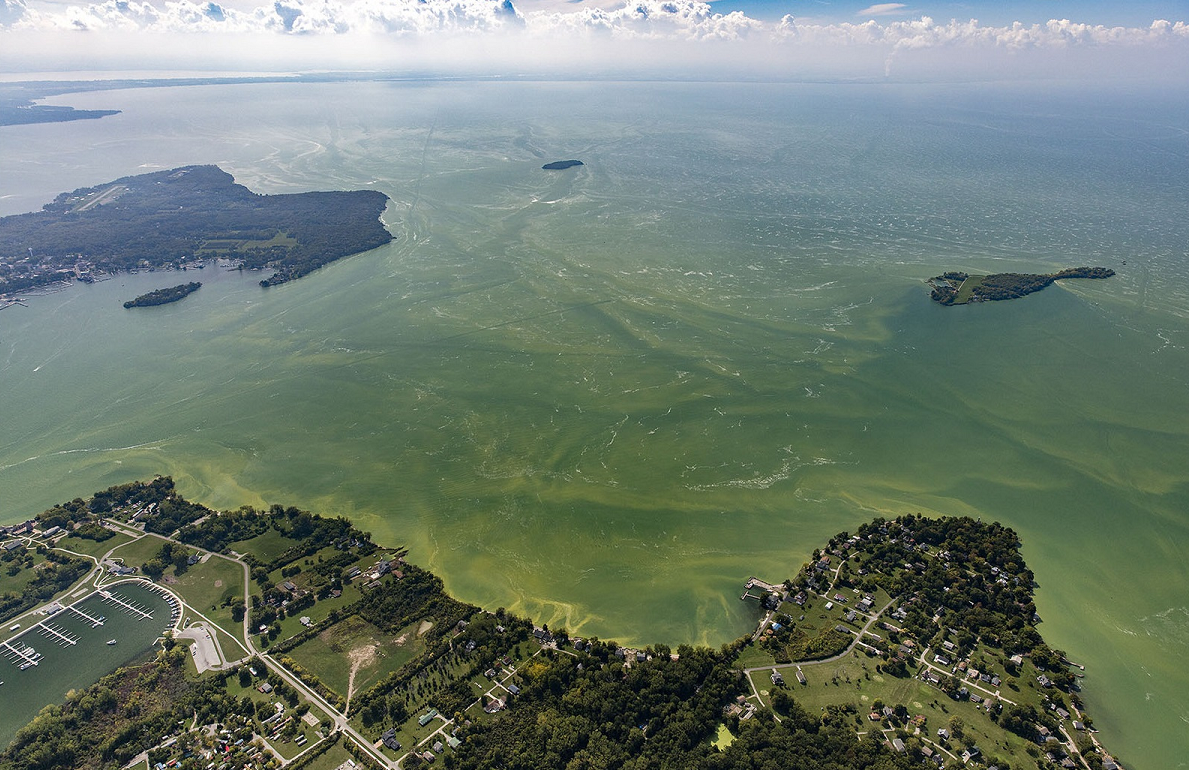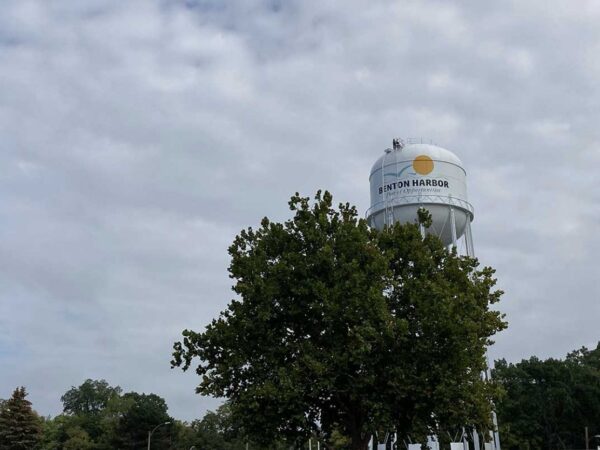
Ohio governor’s non-binding executive order frustrates farmers, falls short for conservation group
As peak algae season nears for Lake Erie, there has been a flurry of activity in Ohio designed to deal with the dreaded blooms that can cause municipalities to shut down water systems, close beaches, and put a damper on the tourism economy.
Last week, Lake Erie scientists predicted that the 2018 algae bloom will be “significant,” but not as severe as record blooms in 2011 and 2015.
The scientists cautioned that variables like wind direction come into play and a smaller bloom doesn’t mean it is less toxic. The 2014 Toledo water crisis was caused by a bloom similar in size to what scientists are predicting for the 2018 season.

Ohio State’s Stone Laboratory, courtesy of Mary Ellen Geist
The annual prognostication is widely anticipated and took place at Ohio State University’s Stone Lab, a scientific enclave on Gibraltar Island in Lake Erie.
In a move that was seen as pre-empting the 2018 algae estimate, the previous day Ohio Gov. John Kasich issued an executive order directing state agencies to begin a process that could lead to tighter restrictions on specific farming operations that are the biggest threat to Lake Erie.
Kasich’s order acknowledges Lake Erie’s official “impaired” status and that previous measures to reduce nutrient runoff will not meet agreed to targets under the Great Lakes Water Quality Agreement.
Under the non-binding agreement, Ohio, Michigan and Ontario in 2015 committed to a 40 percent reduction in phosphorus flowing to Lake Erie by 2025. It included a 20 percent reduction by 2020.
The stepped up action by Kasich comes late in his administration as he is term-limited and will be out of office in January 2019.
Farmers object

Adam Sharp, executive vice president of Ohio Farm Bureau, Photo by ofbf.org
The Ohio Farm Bureau reacted sharply to Kasich’s order saying in a press release that the governor acted unilaterally and the agriculture community was not included in the process that could lead to regulations.
“We can’t even react to the specific regulations he’s proposing; we haven’t seen them,” said Adam Sharp, executive vice president of Ohio Farm Bureau.
Sharp also questioned why farmers are now a target for regulation when they have received only one percent of $3 billion Ohio has spent on Lake Erie water quality.
The bureau’s release said “working with the legislature – and the administration – is always the preferred approach to address agricultural concerns.”
“Three pages of paper”
Environmental groups called Kasich’s order a step in the right direction but are focused on what follows.
“It is essential that these actions serve as a catalyst for comprehensive action by the state of Ohio to solve this serious threat,” the Nation Wildlife Federation’s water program director Gail Hesse said in a statement.
Columbus attorney Madeline Fleisher acknowledged the positive aspect of Kasich’s order but was skeptical of its potential effectiveness.

Senior Attorney Madeline Fleisher, Photo by Environmental Law & Policy Center
“The executive order is three pages of paper that support that the administration has the right intentions,” Fleisher said. “But there so many administrative hurdles they have to get over before they can implement the limited measures they’re willing to do,” Fleisher told Great Lakes Now.
Fleisher is with Chicago-based Environmental Law and Policy Center (ELPC).
She said she expects pushback on the order from farmers and their allies in the Ohio legislature.
Fleisher said ELPC favors and the Clean Water Act requires that Ohio set a Total Maximum Daily Load (TMDL) of nutrient runoff that Lake Erie can handle now that the lake has been designated “impaired.”
She said if a TMDL is in place the bureaucratic state hurdles can be sidestepped, there is increased accountability, and a failure to act could be challenged in court.

Laura Johnson, Director of the National Center for Water Quality Research, Heidelberg University, Photo by heidelberg.edu
Heidelberg University scientist Laura Johnson told Great Lakes Now that “to do a TMDL is a bit redundant with existing regulations for target reductions.”
“However, with the baseline amount of work we already have here, it wouldn’t hurt to have a TMDL for the western Lake Erie basin and I don’t believe it would take long to pull together,” she said.
Johnson directs the National Center for Water Quality Research at Heidelberg in Tiffin, Ohio.
Fleisher said Kasich’s executive order “could be part of the TMDL plan but it couldn’t take precedence over it.”
ELPC along with Advocates for Clean Lake Erie have sued in federal court saying once Lake Erie was declared “impaired,” a TMDL is required under the Clean Water Act.
Federal attorneys representing the U.S. Environmental Protection Agency say the case should be dismissed.
The issue is before Judge James Carr in U.S. District Court in Toledo in August.
Stone Lab Director Chris Winslow declined to comment specifically on Gov. Kasich’s executive order but said he favors targeted action for dealing with nutrient runoff, not a shotgun approach.
“It’s in our best interests given limited resources that you want to target your resources to areas contributing most of the phosphorus,” Winslow told Great Lakes Now at the Stone Lab presentation.
In a separate action last week, Kasich signed legislation titled Clean Lake 2020 that passed the Ohio legislature.The bill provides up to $36 million to support a host of programs designed to reduce nutrient runoff to Lake Erie.
In a provision of the bill, Ohio State’s Stone Lab will receive $2.65 million to build additional research space and procure in-lake monitoring equipment.
Featured Image: Harmful Algal Bloom in Western Basin of Lake Erie September 2017, Photo by Zachary Haslick via flickr.com cc 2.0




